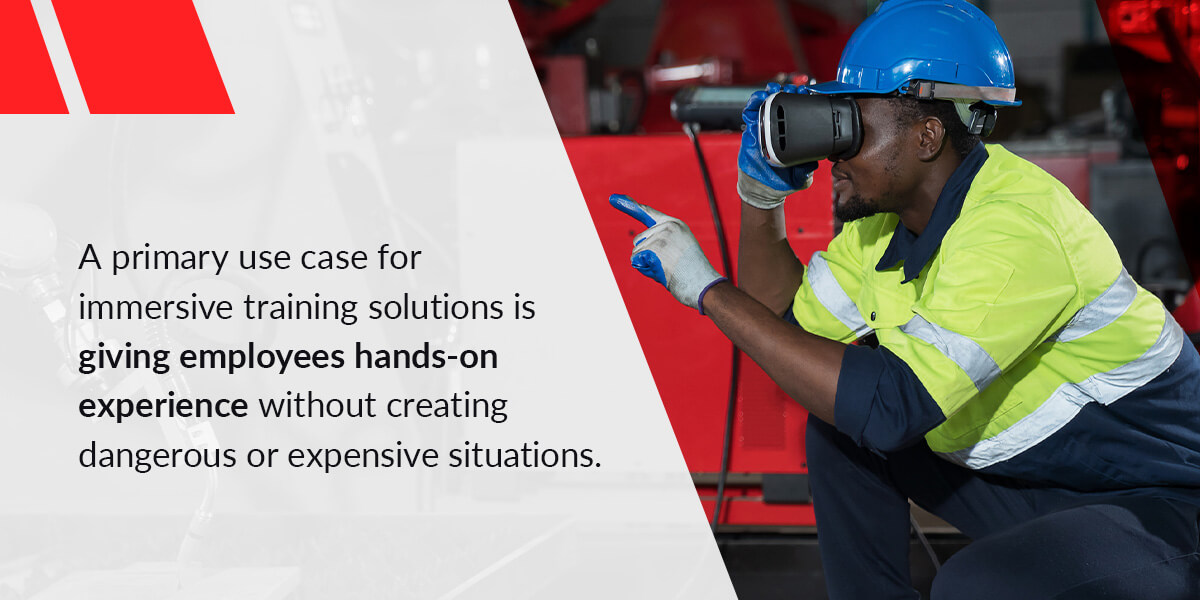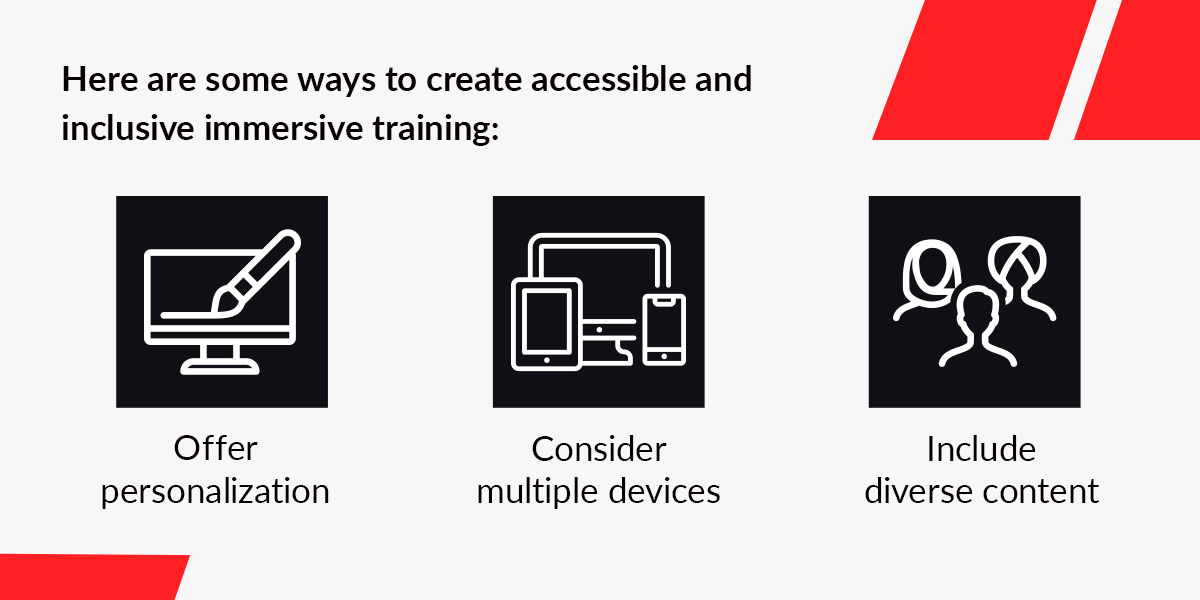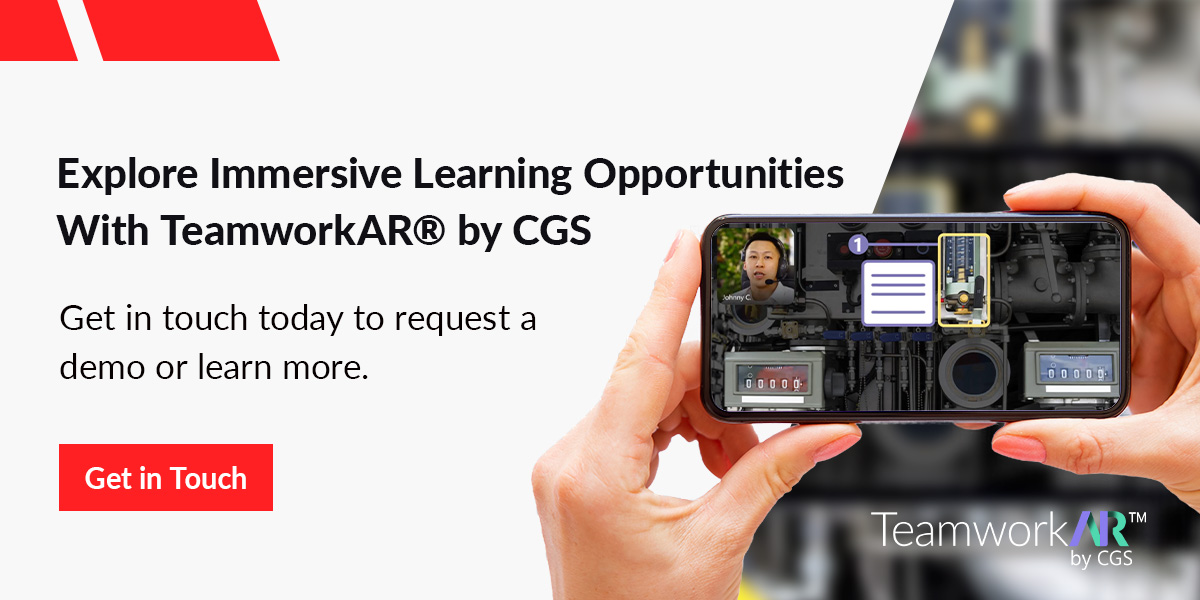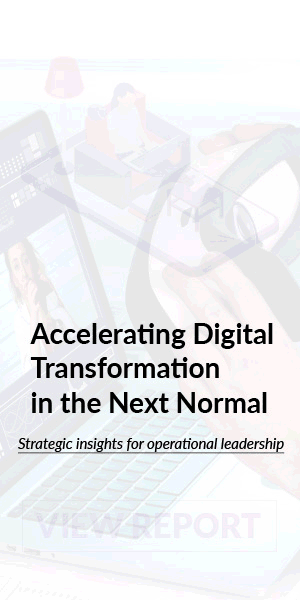Topics
Incorporating Immersive Learning in Employee Training

Educators have long understood the benefits of creating immersive learning experiences, and technology advancements have brought the benefits to diverse workplaces. Immersive learning tech, such as augmented reality (AR) and virtual reality (VR), helps businesses dramatically improve their learning and development (L&D) processes and foster high-performing teams. You'll find immersive learning technology across various tasks and industries, from soft skills in retail to hazardous activities in manufacturing.
Implementing immersive learning in L&D calls starts with thoroughly understanding the options, benefits and best practices.
What Is Immersive Learning?
The definition of immersive learning is rather broad, but this method puts the learner in an interactive environment, usually through virtual platforms, and recreates or interacts with real-world elements. VR and AR are popular tools used to create immersive experiences because they can build virtual worlds while incorporating interactions from the user, like moving one's head to look at something else or selecting an element on an electrical panel.
This type of learning typically promotes the following elements:
- Engagement: Putting learners in the moment helps boost their engagement with the content and experience.
- Efficiency: These unique learning modes often help employees learn faster with hands-on experiences that would otherwise be difficult or expensive to create.
- Spatial designs: Immersive learning usually involves navigating and interacting with a physical space, requiring the user to take action as they make new connections between learning content and real applications.
- Data-driven design: Like other L&D strategies, immersive learning should measure the program's efficacy and employee progress.
L&D teams use immersive learning methods to teach concepts and tasks through various tools and programs, which we'll explore later. One prominent use for immersive learning involves training workers in high-risk situations, such as surgery or flight. Other hands-on tasks have become popular subjects, too, enabling users to learn from faraway educators and reduce training time. Even soft skills like interacting with customers and coworkers or learning new languages have found their way into immersive learning, thanks to its ability to create emotional connections.
However it fits into a business, immersive learning can transform workplace training, empowering your team with engaging and fast education.
Benefits of Immersive Learning in Corporate Training
Immersive technologies in the workplace offer several crucial benefits for employees and businesses.
1. Safe Training Environments

A primary use case for immersive training solutions is giving employees hands-on experience without creating dangerous or expensive situations. For example, a training surgeon could enter a virtual operating theater, while a pilot could fly a virtual plane. They are free to make mistakes and practice their skills without putting anyone at risk or damaging pricey equipment. Other fields that might use this benefit include trades like construction workers and electricians.
Companies can also use immersive training solutions for situations involving people, like responding to an emergency alert to evacuate a space or defusing a situation with a hostile customer.
When employees have the space to work without negative consequences, they can use problem-solving skills, experiment with new solutions and increase their confidence.
2. Reduced Training Time
With an immersive learning experience, you can get team members on the job in a much shorter timeframe. One PWC survey found that VR learners trained four times faster than peers in the classroom. Even when you consider the time spent fitting headsets and learning the technology, immersive VR training still outperformed in-person learning by three times. While a classroom session took two hours, e-learning took 45 minutes, and VR took just 29 minutes.
This reduction in training time can be extremely valuable for businesses looking to speed up onboarding. From reduced training costs to flexibility in a volatile labor market, faster training is a powerful benefit of immersive training.
3. Increased Engagement
Immersive learning provides a more engaging way for employees to learn. Rather than learning theories and concepts, it puts them in a real-world situation where they can actively see how their knowledge helps them. It's authentic and contextual, emphasizing how the content relates to real situations the learner may encounter.
Contextual learning supports stronger engagement by helping learners understand their role and impact. For many, it is empowering and motivating. PWC's survey found that VR made learners up to 275% more confident in acting on skills versus 198% for classroom learning. VR learners also saw benefits over e-learners and were four times as focused.
Immersive training solutions also tend to be more engaging due to the nature of the experience. Employees “learn by doing” and have agency in affecting their environment, supporting more engagement and attention.
4. Reduced Costs
Businesses using immersive learning solutions find cost savings in several areas. They can drastically reduce costs associated with in-person learning, including:
- Hiring costs for instructors.
- Building, facility and equipment costs.
- Travel costs to get employees to onsite training events or in the field.
- Employee time spent supervising or training learners.
- Costs associated with errors made by learners.
- Employee time spent away from work while upskilling or reskilling.
Limiting training time also reduces indirect costs associated with onboarding, getting employees to work faster and improving their performance. Downtime due to training limitations can also be costly — connecting experts and novices over AR and VR often saves significant resources.
While immersive learning platforms have upfront costs, economies of scale often give medium-to-large organizations significant ROI.
5. Deeper Knowledge
Perhaps one of the most meaningful advantages of immersive corporate workshops is their impact on retention. With the emotional connections and contextualization of immersive learning, workers don't memorize facts and instructions — they construct knowledge. Combining hands-on experience with practical skills gives learners a deeper understanding of the content.
The learning retention rate of immersive VR training is 75%. Learning by teaching someone else is the only method that performs better. When building a knowledgeable workforce, immersive learning with VR and AR are extremely valuable.
Types of Immersive Learning Experiences
AR and VR technologies have become cornerstones of modern immersive learning. You can create diverse scenarios and learning experiences with this tech:
- VR: Immersive VR training enables learners to explore a digital world, typically through a 3D headset and handheld controllers. The wearer feels fully within the virtual world and can explore and interact with it. The environment might be filmed with a 360-degree camera, such as a construction site, or it could be entirely computer-generated.
- AR: AR is all about adding virtual elements to the real world. Usually, AR immersive learning solutions superimpose digital resources on the environment, such as instructions to walk you through a process. These capabilities make AR particularly useful for in-field learning, where they can augment the real environment. For example, a trainee could use their mobile phone to share a live video of a piece of equipment. An experienced worker can add arrows, drawings and graphics to direct the trainee to different actions.
Both options can support various types of education, like onboarding, reskilling, upskilling and compliance training. You can even combine the two through mixed reality, which enables you to use real-world activities to interact with digital elements.
Thanks to the significant role of VR and AR in employee training, they facilitate immersive learning solutions with novel learning strategies, such as:
- Gamification: Gamification gives learning content game-like elements, such as levels, achievements and competition. It can help users learn content and build engagement through increased interactivity and emotional connections, such as meeting characters.
- Simulations: Simulations replicate real-life situations in a virtual world. You can simulate technical tasks, like working on a construction site or performing surgery, or soft skills, such as giving customers a great sales pitch.
- Digital twins: Digital twins provide 3D representations of an existing real-world object, such as a building or engine. For example, a quality engineer could overlay a digital twin of an engine with a real-world model to identify differences and learn where errors typically occur. Digital twins are a core element of the metaverse, which recreates work environments to help remote employees collaborate.
- Prototyping: Prototyping enables workers to test out creations and see how different environments might affect them. An architect could prototype a building and assess weather impacts.
Best Practices for Immersive Learning Implementation in the Workplace
Immersive learning solutions are powerful and unique L&D resources requiring careful execution. As you implement immersive corporate workshops, keep the following best practices in mind.
1. Define Learning Objectives Upfront
The novelty of immersive learning solutions sometimes overtakes considerations for effective learning. Entering a beautiful virtual world might be fun, but does it include elements that help employees grasp the concepts you want them to learn?
Identify your learning objectives during development and when communicating with employees. Your learners should know what to expect. You'll also need this information to evaluate the efficacy of your strategy.
2. Consider Your Existing Learning Systems
You likely already have an infrastructure for employee education. Make sure your immersive learning solution is compatible with this system. You may be able to replace in-person courses with 3D immersive learning experiences, or you might need to overhaul your plan. Remember, these experiences are often excellent for augmenting traditional training.
Look for a solution that integrates with your learning management system (LMS) and your IT processes. It should also be scalable to adapt to your workforce.
3. Design for User Preferences and Needs
Each employee is unique. Consider how you can offer immersive training that meets their needs and preferences, such as their comfort with new technology or their existing knowledge base.
Say you have a team of technicians split between older tenured workers and fresh graduates. The tech-savvy young staff might be interested in 3D immersive learning with a VR headset, while the experienced workers prefer a less intrusive option, like an AR mobile app. Maybe some of your staff doesn't have smartphones — you may need to provide devices or alternative training options.
Similarly, the experienced workers have more knowledge, so a VR session that only covers the basics won't be very helpful. Instead, tailor training options for varying levels of career progression.
4. Craft Inclusive and Accessible Immersive Learning Experiences
Your workers come from different backgrounds and ability levels. Make sure everyone can use your immersive training effectively by diversifying content and incorporating accessible design features.

Here are some ways to create accessible and inclusive immersive training:
- Offer personalization: For experiences with avatars, enable users to customize their characters with different skin tones and ability levels. You may also incorporate personalized adjustments for accessibility, such as adding captions for a user who indicate hearing difficulties.
- Consider multiple devices: Employees with disabilities may be unable to use certain devices. Where appropriate, try to offer the training with accessible devices such as mobile phones, which include features like text-to-speech that many low-vision users use. Supporting multiple devices also helps improve the general user experience by providing more options and flexibility.
- Include diverse content: Keep your content inclusive with diversity and representation. Include characters from different backgrounds, gender-neutral language, inclusive language and other culturally sensitive elements.
5. Leverage Technology to Maximize Learning Outcomes
Take your immersive learning further by incorporating it with other technologies in your arsenal. Analytics is crucial, and our research found that analytics and artificial intelligence are the top technologies enterprises pair with immersive learning.
On the backend, analytics and AI support functions like speech and object recognition and labeling. They also facilitate data-driven insights so you can:
- Evaluate the effectiveness of your system and various initiatives.
- Calculate the ROI of your solution through time savings, cost reductions, etc.
- Track compliance requirements.
- Measure engagement metrics.
- Refine the learning experience over time.
Other valuable technologies to integrate include an LMS and device management system. Your LMS can help you track and manage learning, while device management programs facilitate reliable and cost-effective infrastructure for devices like headsets, mobile phones and software.
Preparing for the Future With Immersive Training Technologies
Unsurprisingly, the field of immersive training has many possibilities ahead of it. In a short time, it's moved from a novel tech toy to a crucial element in corporate learning. Digital twins and simulations are two popular technologies with many applications, especially for training performed in parallel with on-the-job tasks. Data sources are also rising, increasing the complexity of immersive learning through additional inputs like geolocation, voice inputs and gestures.
Augmented reality is a particularly promising option, as it can leverage smartphones, which most people already have, for low-cost implementation. Analysts expect the AR market to soar from $42.4 billion in 2022 to $1,109.71 billion in 2030 — a compound annual growth rate (CAGR) of 50.7%.
As the industry grows and evolves, businesses must be ready for the changes and prepared to incorporate emerging technologies with high training potential. Focus on fostering a culture of continuous improvement and lifelong learning. While improving your flexibility for new learning methods, a knowledge-first culture helps your team stay open to growth and new ideas.
Explore Immersive Learning Opportunities With TeamworkAR® by CGS
Immersive technology brings exciting benefits and possibilities to L&D teams across industries. Developing VR and AR systems can help you build a top-tier workforce with improved engagement and retention — all while reducing costs.
Still, developing immersive learning solutions requires care and a thorough understanding of the technology to successfully integrate it with your team and system. At CGS, we specialize in state-of-the-art training digital training programs. Our learning specialists can craft bespoke immersive experiences using digital tools such as TeamworkAR®, our mixed-reality platform for real-time virtual training, collaboration and process development.
Get in touch today to request a demo or learn more about how we can help you transform your workforce with immersive learning.


